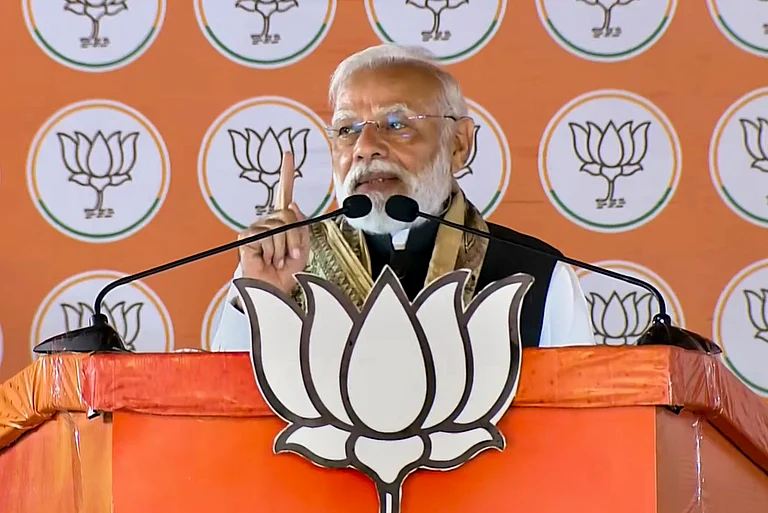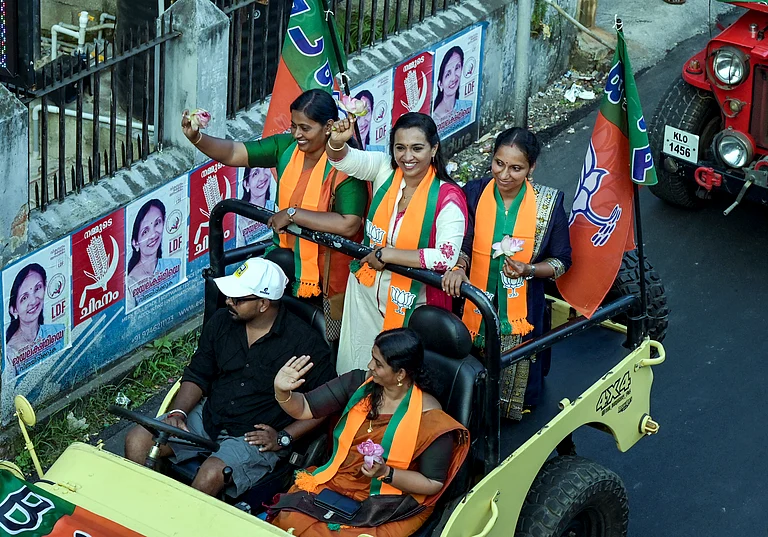The share of the majority Hindu population in India decreased by 7.82 per cent between 1950 and 2015, while the share of the Muslim population increased to 14.09 per cent from 9.84 per cent in the same period. The figures were made available in a study - Share of Religious Minorities, A Cross-Country Analysis - by the Economic Advisory Council to the Prime Minister (EAC-PM).
According to the study, the share of the majority Hindu population decreased from 84.68 per cent to 78.06 per cent. The share of Muslim population, meanwhile, increased to 14.09 per cent from 9.84 per cent between 1950 and 2015.
While the Hindu population share shrunk in India, the share of minorities, including Muslims, Christians, Buddhists and Sikhs, went up. However, as per the EAC-PM study, the number of Jains and Parsis in the population mix also logged a decrease, with the latter registering a "stark" decline.
According to the study:
In India the share of the majority Hindu population decreased by 7.82 per cent between 1950 and 2015 - from 84.68 per cent to 78.06 per cent.
The share of Muslim population in 1950 was 9.84 per cent and increased to 14.09 per cent in 2015 - a 43.15 per cent increase in their share, as mentioned in the EAC-PM report.
The share of Christian population rose from 2.24 per cent to 2.36 per cent - an increase of 5.38 per cent between 1950 and 2015.
The share of Sikh population increased from 1.24 per cent in 1950 to 1.85 per cent in 2015 - a 6.58 per cent rise in their share.
The share of the Buddhist population witnessed a noticeable increase from 0.05 per cent in 1950 to 0.81 per cent.
The share of Jains in the population of India decreased from 0.45 per cent in 1950 to 0.36 per cent in 2015.
The share of the Parsi population in India witnessed a stark 85 per cent decline, reducing from 0.03 percent share in 1950 to 0.004 per cent in 2015.
According to the report, only Sri Lanka and Bhutan are among non-Muslim majority countries that have witnessed an increase in the share of the majority religious denomination between 1950 and 2015.
In Sri Lanka, the share of the majority Theravada Buddhist population increased by 5 per cent while the share of Hindu population, the next largest religious group, declined by five per cent.
In Bhutan, the majority Tibetan Buddhist population increased by almost 18 per cent while the Hindu population declined from 23 per cent to 11 per cent in the same period.
'India One Of Few Countries Defining Minorities Within Population'
The report says that "Surprisingly, few countries have even defined “minority” within their population and India happens to be one of them. The modern architecture of minority protection within national and international law was built post World War II and is now over seven decades old. It is an opportune moment to take stock of the status of minorities across countries."
The report attributed decrease in the share of the majority population and a consequent increase in the share of minorities to the "net result of all policy actions, political decisions and societal processes" aimed at providing "a conducive environment for increasing diversity in society."
"...Our analysis shows that the world has become more heterogeneous in the previous six decades. In 1950, the starting point for our study, the share of the majority population in a society was 75 percent. The share of majority religion in countries around the world has reduced by 22 percent from 1950 to 2015," the study said.
Muslim Majority Countries
The study said all the Muslim-majority countries witnessed an increase in the share of the majority religious denomination except Maldives where the share of the majority group (Shafi’i Sunnis) declined by 1.47 per cent.
Bangladesh saw an 18 per cent increase in the share of the majority religious group, the largest such increase in the Indian subcontinent between 1950-2015, the study said.
Pakistan saw an increase of 3.75 per cent in the share of the majority religious denomination (Hanafi Muslim) and a 10 per cent increase in the share of total Muslim population despite the creation of Bangladesh in 1971.



























